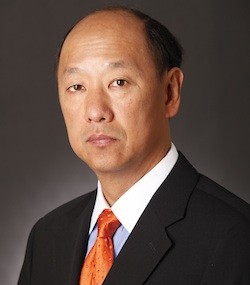It’s not the simplest customer relationship.
Exchanges covet high-frequency traders for their volume. But the principle of fair market access precludes exchanges from going too far in wooing HFTs; plus, some practices of the shortest-term market participants get under the skin of core institutional customers, so exchanges have a vested interest in reining them in if necessary.
“They definitely want the business of HFTs. I don’t think any exchanges are saying high-frequency traders are bad,” said Rich Repetto, principal at Sandler O’Neill. “I don’t know about (terming their stance as) accommodative — but what I haven’t seen them do yet is aggressively try to weed out some of the bad behavior.”

Rich Repetto, Sandler O’Neill
High-frequency trading is commonly defined as a trading methodology that seeks to use a speed advantage to rapidly move in and out of positions, making a small profit on each transaction and holding no positions at day’s end. Just a curiosity in a small corner of the market as recently as the early 2000s, HFT practitioners leveraged technological advances and regulatory change to expand to as much as two-thirds of equity volume on some exchanges a few years ago, though interest has tapered off more recently.
Some non-HFT market participants say high-frequency traders provide valuable liquidity and benefit the market overall; others are neutral, saying HFT is just the latest speed-based strategy that needs to be dealt with; while others are negative, saying HFT increases trading friction and impairs market quality.
Market operators lean toward the first view.
“High-frequency traders are an important part of the market, just like retail firms, institutions, traditional money managers, and agency traders are important parts of the market,” said Bryan Harkins, chief operating officer of Direct Edge, the third-largest U.S. stock-exchange operator. “High-frequency traders are certainly short-term and their business is trading, but they do serve a purpose in the market, which is to provide liquidity and help keep markets efficient.”
There is at least an awareness on the part of exchange leaders that the high-frequency sector comes with some baggage. In June 2012, NYSE Euronext Chief Executive Duncan Niederauer told a U.S. House financial-services subcommittee that HFT had “disconnected” the general public from markets. Last month, Toronto-based Aequitas Innovations, led by market veteran Jos Schmitt, said it plans to launch a new Canadian exchange that would prohibit some HFT practices, such as latency arbitrage and ‘ghost’ orders.
“You’re going to see more of this, trying to accomplish the same thing — bigger block sizes without as much HFT interference into the size of the trade,” Repetto told Markets Media. “I know two or three small alternative trading systems being developed that will go for bigger block sizes. In at least one of them, HFT plays a role in helping execution. You’re going to see more innovation.”
Some buy-side traders have concerns regarding high-frequency traders, and the potential for exchanges to roll out a red carpet exclusively for them. “Accommodative is the word I think best describes” exchange’s stance toward HFT, said Mike Earlywine, head trader North America at Ecofin, which manages $1.2 billion. “Creating unique types of orders that give the HFT an advantage is a step too far, in my opinion.”
For their part, exchanges stress that they don’t provide an advantage to any particular market constituency.
“We’re doing an online order-type presentation that really breaks down and tries to get rid of the ‘bogeyman’ theories that order types are designed to advantage one party over the other,” Harkins told Markets Media. “That is simply not true.”
Direct Edge’s buy-side customers mostly seek clarity on the market ecosystem that includes HFT, according to Harkins. “One of the main requests we get from buy-side institutions is for a deeper understanding of what’s going on in the marketplace,” he said.
“Of course you’re going to have some market critics and naysayers who have a harsher and more critical view of high-frequency traders, but I’d put them in the minority,” Harkins continued. “Most buy-siders just want to understand what’s going on in the market. The market has changed rapidly over the last ten years — very rapidly over the last five — and more knowledge gives them a greater level of confidence.”

